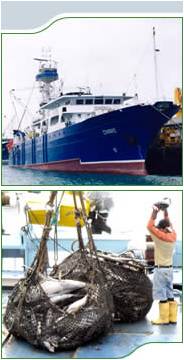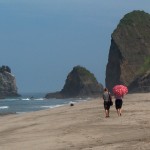
MANTA
Manta is an important port on the Pacific Ocean, located in a dry tropical forest with an average annual temperature of 28 degrees Celsius (77° F).
Because it has some of South America’s most breathtaking beaches. It is reknowned for its diving and sport fishing. It also serves as the primary industrial port of Ecuador’s tuna industry.
PUERTO In addition, Manta hosts an International Theater Festival in September. Sporting events take place in November, and also from January through April. In the city one also finds a selection of first rate night clubs, amusement parks, and casinos.
Manta has a rich history: it was originally settled by the pre-Hispanic Manteña culture. Today it is a primary city in the province of Manabí.
Nearby in the province is the famous Isla de la Plata, which has flora and fauna similar to that found in the Galapagos Islands. On Isla de la Plata one finds such unique species as blue-footed boobies and frigate birds. One can also see whales there from June through September. Isla de la Plata is called Samall Galapagos
Produced in Manabi and known throughout the world are the original and official «Panama» hats, which are made just outside of Manta in the town of Montecristi.
Manta is also famous for its delicious cuisine, much of which is the best in the country. For those who enjoy seafood Manta is second to none.
Manta has its own airport with direct flights to Quito and Guayaquil. From Manta one can easily and quickly access other destinations of interest in this small but diverse country. Ecuador contains four entirely distinct regions, each unique inits climate and traditions; they are the Oriente (jungle), Sierra (mountains), Costa (tropical coast), and the Galàpagos Islands.
Beaches
Manta has an 12 beaches
1. Los esteros
2. Tarqui
3. Murciélago
4. Barbasquillo
5. Piedra Larga
6. San Mateo
7. La Tiñosa
8. Santa Marianita
9. Liguique
10. San Lorenzo
11. Las Piñas
12. Santa Rosa

Beaches – near Manta city
• Crucita: Hang Gliding and parasailing are available 1 ½ hours from Manta.
• San Jacinto and San Clemente. (2 hours from Manta)
• San Vicente and Canoa. (3 hours from Manta)
• Puerto López and Puerto Cayo. (2 ½ hours from Manta)
• Los Frailes. (2 ½ hours from Manta)
URBAN AREA
• The Murcielago, with its scenic boardwalk has a group of restaurants, recreational sports, craft markets, bars and other places for fun and relaxation.Located nearby are banks, hotels and a commercial area. The waters are favorable for practicing aquatic sports such as surfing, sailing, body-boarding, and fishing.
• Tarqui, Park of the Shellfish is where delicious local foods are prepared for your enjoyment. The practice of several sports is also available.
• Barbasquillo Tourist Complex: There is a pool, sauna, gym, and disco with direct access to an extensive beach. There are also horses available for riding along the beach.
• San Mateo: Area of urban expansion, home to fishermen who are dedicated to their occupation, much like their Manteña ancestors.
RURAL AREA
• La Tiñosa: A rest area with sand dunes and cactus that measure 3 meters high and various plant species.
• Santa Marianita: Fishermens´ rural area.
• Liguique: Beach far from the urban contour, where you can find rocky areas inhabited by snails, octopi, and lobsters.
• San Lorenzo’s Lighthouse: Wide beaches with wonderful views from the lighthouse where you can see the Isla de la Plata (Island of Silver). This area is part of an ecological reserve called Parque Nacional Machalilla

FAMOUS TOQUILLA STARAW
The straw hat is made Toquilla communes in rural areas of the city.
This hat is badly named as PANAMA HAT
You can find hats from $ 10 to $ 400
Outside of Manta
• Machalilla National Park: With its well known Isla de la Plata offers similar fauna to the Galapagos Islands (2 ½ hours from Manta). **
• Montecristi: Home of the famous Panamá Hats (15 minutes from Manta)
• San Plácido Waterfalls: Natural waterfalls inside a forest of incredible flora. (2 hours from Manta)
• La Locita Waterfalls: Natural waterfalls located in the town of Junin. (2 hours from Manta)
• Bahía de Caraquez: Islas Frigatas, The Orchids Tropical Dry Forest, Island of The Birds, Wetlands of the Río Chone Estuary, Hikes to the Punta Bellaca, and Los
• Humedales – an impressive ecosystem of lagoons and meadows. (2 ½ hours from Manta)
MORE ABOUT MANTA
Manta is a major commercial and holiday resort center and is the second major Port of the country behind Guayaquil.
The evenings see a hive of activity of partying people, loud music and meandering cars that form around the nearby side streets and main frontage of the Malecón that arcs around the bay. Bathed in constant fresh winds the Malecón is always a pleasant area to walk in the evening and most refreshing in the night breezes.
Since 1999 Manta has been used as a military location for U.S. Air forces in unison with Ecuador’s in strategic warfare against Colombian drug traffic cartels through surveillance flights as well as being used as a geographical look out point for the U.S.A for any war crafts heading north from the Middle East and Asia.
One famous episode in Manta history occurred when a Boeing 707 carrying cargo crashed into the town’s wooden church in 1996 although it was reported that amazingly the statue of the virgin remained intact.
A bridge on the eastern side of Rio Manta connects Manta with Tarqui which is the popular beach over the weekends. There is one museum of interest, Banco Central museum (Avenida 8 and Calle 7) at the back of the Bus terminal which displays ceramics from the Huancavilca-Manteño culture. During weekends locals flock to the main and recently refurbished Playa Murciélago area of the Malecón. The seafood here is excellent as well as the music, beach aerobics, parties and general night life ambiance. On your way out of town you’ll also find a new shopping mall called Paseo Shopping center (on Avenida 4 de Noviembre
THE HARBOUR
This is the part of the city that acts as one of Ecuador’s international ports, with all the vigor of its industrial and trade activity, exporting large quantities of tuna, coffee, tagua ivory nuts and cacao, all of which are highly prized in the world market, from its busy wharves. The climate, the marine environment, the coastal range, and the relief of the land are all central to the tourist attractions of Manta and Manabi.
BEACHES TO CHOOSE FROM:
San Vicente, San Jacinto, San Clemente, Puerto Cayo, Puerto Rico, Puerto Lopez, Crucita, Canoa, Cojimies, Pedernales and Jaramijo, are beautiful beaches surrounded by fishing villages along about 300 Km. of the Manabi coast. Much visited throughout the year, they offer peace, tranquility and tasty cooking. The surrounding vegetation consists of mangrove swamps, thickets and woods. Places such as Puerto Lopez and Pedernales have become towns with a good hotel infrastructure and are points of departure for destinations like Machalilla National Park.
Inns built from guadua cane and other materials from the region are part of their attraction.
Manta has one of the most impressive beaches in South America, selected as the site of the Sixth South American Windsurfing Championship. It is also famous for its features and facilities for practicing the sports of diving and fishing.
If you are one of the people who visit and enjoy the city and its surroundings by day and relax by night, getting to know and enjoy the bars, we can assure you that you will find all you will need in order to have a great time. There is a selection of first-class night-clubs, entertainment parks and casinos in the city; in addition, the International Theater Festival is held in Manta every year in September, as well as many sports events in the period from November to April.
The typical craftwork in Manabi and its environs, well-known throughout the world, are the original and official «Panama Hats», which are made very near the city of Manta, in the picturesque village of Montecristi. Manta is also famous for its delicious cooking, considered by many to be the best in the country. For those who enjoy seafood Manta has no equal.
EL MURCIELAGO
This lovely beach has a scenic promenade, where there are various restaurants, recreational sports facilities, craft markets, bars and other places for enjoyment. Near the beach are the main banks, hotels and the shopping area of the city. The waters of the beach are good for practicing water sports such as surfing, sailing, body-boarding, and fishing.
The promenade is of modern construction, with restaurants offering all the specialty foods of the region and typical drinks. In the last few years it has become one of the compulsory ports of call for international cruise ships running from the Caribbean to the Latin American Pacific. Bars and discotheques are part of the city, filling up with tourists at weekends. In October, Manta receives dozens of artists who get together in the Chusig Theater for the International Theater Festival.
TARQUI
This is a seafood park area where the most delicious typical foods are prepared exquisitely. In addition, countless sports are played on its beach.
SAN MATEO:
This area of the city is expanding. The people in this village, whose ancestors are from the Manta Culture, devote themselves to craft fishing.
THE SAN LORENZO LIGHTHOUSE:
Broad beaches with a wonderful view from the lighthouse, from which you can see the De La Plata Island. This area is part of an ecological reserve known as Machalilla National Park.
Where to go outside Manta
MACHALILLA NATIONAL PARK: Its De La Plata Island is very well known, having a fauna similar to that of the Galapagos Islands (2½ hours from Manta).
MONTECRISTI: the «home» of the famous Panama Hats (15 minutes from Manta).
SAN PLACIDO WATERFALL: a natural waterfall within a forest with incredible fauna. (2 hours from Manta).
LA LOCITA WATERFALL: a natural waterfall located in the town of Junin. (2 hours from Manta).
CARAQUEZ BAY: Fragatas Islands, the Dry Forest of Tropical Orchids, the Island of Birds, the Wetlands of the River Chone estuary, Walks to Punta Bellaca; it also has excellent hotels and places for rest and enjoyment. One of its attractions is sailing on the River Chone in a launch to the San Vicente beach. Other options are to enjoy its beaches and sea-wall or go up to other lonely beaches like Boca Briceño or the Matal. Other interesting places are the River Chone estuary, with the Corazon del Sol and Fragatas islands, and the Banco Central and Casa de la Cultura museums.
PORTOVIEJO
Capital of the province, also known as the city of the «Royal Tamarind», one of its attractions is the Metropolitan Cathedral, together with the San Pedro Senior Seminary. Other sites near the town are the thermal spas El Zapallo and La Peña, La Papayita, San Antonio and Cerro De Hojas, among others.